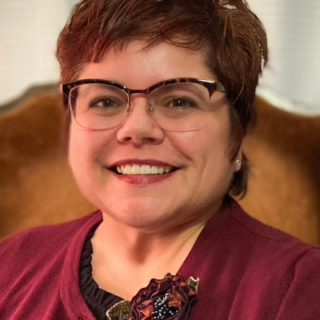California’s home insurance market continues to shift as wildfires, rebuilding costs, and carrier withdrawals reshape where and how homeowners can find coverage. If you’ve been non-renewed or denied by private insurers, the California FAIR Plan serves as the safety net that keeps your property insured.
Below is a clear, up-to-date guide covering what the CA FAIR Plan insurance includes, how it works, and how to fill its gaps with companion policies for full protection.
What Is the California FAIR Plan?
The California FAIR Plan insurance program is the state’s insurer of last resort. It’s not taxpayer-funded or operated by a government agency. Instead, it’s a shared risk pool made up of all insurers licensed in California, each contributing to the program’s funding and claims obligations.
That cooperative structure ensures that even when private carriers pause or restrict new business, homeowners in wildfire-exposed or high-risk ZIP codes can still get basic coverage. In short, it exists to keep people insured when traditional options disappear.
What Does California FAIR Plan Cover?
A CA FAIR Plan policy provides limited but essential protection against property damage from key perils such as fire, lightning, smoke, and internal explosion. Homeowners may also add Extended Coverage for windstorms, hail, aircraft or vehicle damage, riots, explosions, and vandalism.
Optional coverage extensions include protection for detached structures like sheds or garages. However, FAIR Plan policies do not match the breadth of a standard homeowners (HO-3) form. Common exclusions include:
- Theft, water damage, and freezing
- Falling objects and personal liability
To close these gaps, many homeowners purchase a Difference-in-Conditions (DIC) “wrap-around” policy, which adds liability, theft, and water-damage coverage. When DIC is unavailable, a stand-alone Comprehensive Premises Liability policy can restore liability protection required by many lenders.
Who Qualifies for FAIR Plan Insurance?
Eligibility for California FAIR Plan insurance depends on demonstrating that private coverage is unavailable. Brokers must document a diligent search with at least a few standard-market declinations before submitting an application.
Typical qualifying factors include:
- Residence or business location in a high- or very-high wildfire-risk zone
- Previous non-renewal for wildfire exposure
- Property conditions (roof age, construction type, or vegetation proximity) that fall outside private carrier guidelines
The FAIR Plan may insure residential dwellings up to $3 million per location, with separate commercial programs for larger buildings. Payment options include monthly installments and electronic payments, subject to published service fees.
How Does the California FAIR Plan Work?
When you apply, your independent agent or broker collects property details—square footage, year built, roof type, updates, and photos of all sides—and estimates the rebuild cost based on local construction pricing. The policy is then bound for the California FAIR Plan insurance cost quoted, and optional coverages can be added.
Most homeowners also secure a DIC wrap immediately afterward to replicate the protection of a standard HO-3. The FAIR Plan handles fire-related perils, while the DIC fills in theft, water, and liability gaps. Together, they function as a complete insurance solution until the private market becomes available again.
The plan is funded collectively by insurers and supervised by the California Department of Insurance. When severe wildfires trigger large losses, each participating carrier contributes to the overall payout pool through assessments, which can affect statewide pricing trends.
Recent Updates Affecting the California FAIR Plan (2024–2025)
Several regulatory and market changes now impact how the CA FAIR Plan insurance operates and how claims are processed:
- Smoke-damage enforcement: Following court rulings and state directives, insurers—including the FAIR Plan—must fully investigate and pay legitimate smoke-damage claims.
- Home-hardening incentives: Under the Safer from Wildfires framework, features such as ember-resistant vents, Class-A roofs, and defensible space can earn mitigation discounts and improve chances of re-entering private markets.
- Clearinghouse expansion: Renewed state efforts help transition eligible homeowners back into private insurance once their property risk improves.
- Wildfire assessments: Major fire events may trigger FAIR Plan member-insurer assessments, indirectly influencing the California FAIR Plan rate increase 2025 discussions.
Optional Coverage & Exclusions Summary
While flexible, FAIR Plan policies remain limited compared to private insurance. Typical add-ons include:
- Extended Coverage (windstorm, hail, riot, explosion)
- Vandalism or malicious mischief
- Other structures such as detached garages or sheds
Excluded perils—like theft, freezing, or water damage—require supplemental coverage. Pairing the FAIR Plan with a DIC or liability policy ensures compliance with lender requirements and closes key coverage gaps.
Typical California FAIR Plan Insurance Cost
Premiums depend on wildfire exposure, property size, and location. Expect higher prices than standard homeowners policies due to concentrated fire risk and reinsurance expenses.
As of 2025, statewide averages suggest FAIR Plan premiums ranging from $1,800 to $6,000+ per year for single-family homes, with multi-million-dollar rebuilds costing proportionally more. Still, it remains a crucial safety net for Californians unable to find coverage elsewhere.
Mitigation efforts, improved defensible space, and annual re-shopping through brokers can all help manage long-term costs.
Tips to Control Costs and Strengthen Eligibility
- Maintain defensible space, trim vegetation, and install ember-resistant vents or a Class-A roof to earn mitigation credits.
- Verify rebuild limits annually based on construction inflation, not real-estate market value.
- Work with an experienced broker to re-shop the clearinghouse each renewal—many properties move off the FAIR Plan as conditions improve.
- Keep photo documentation of upgrades and mitigation features to support underwriting and claims.
FAIR Insurance Alliance Refund & Future Outlook
While homeowners occasionally hear about a FAIR Insurance Alliance refund, these refer to assessments or surplus adjustments shared among participating carriers—not consumer rebates. Any approved California FAIR Plan rate increase 2025 will be subject to regulatory oversight and public comment through the California Department of Insurance.
The FAIR Plan remains financially sound and continues to serve hundreds of thousands of policyholders statewide. It will remain a vital bridge for property owners in wildfire-exposed or hard-to-insure areas.
The Role of the FAIR Plan in 2025
For homeowners facing non-renewal or limited market options, the California FAIR Plan ensures you’re not left uninsured. It’s a fire-centric policy that forms the foundation of coverage in high-risk regions—best paired with a DIC or liability wrap for full protection.
As California adapts to changing wildfire realities, staying insured often means combining tools: mitigation, smart limits, and cooperation with a knowledgeable broker. Used wisely, the CA FAIR Plan can keep you protected today and positioned for better private-market options tomorrow.





